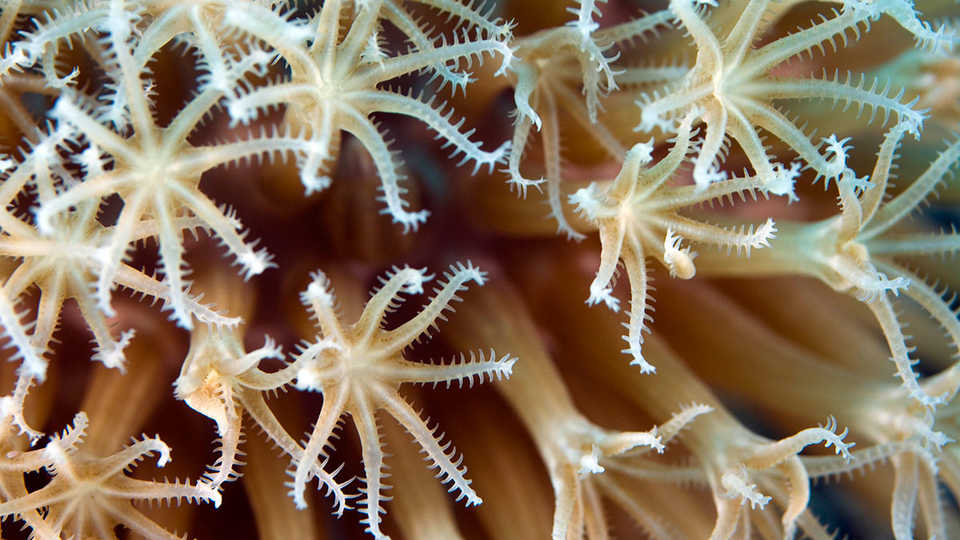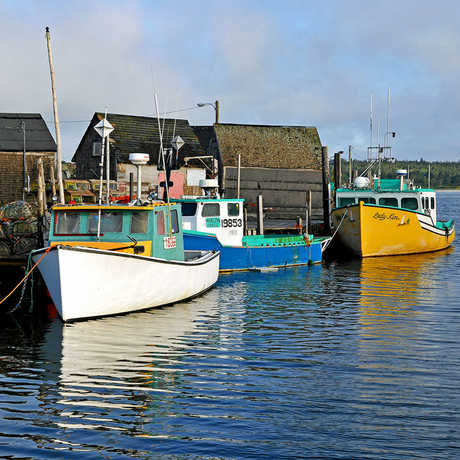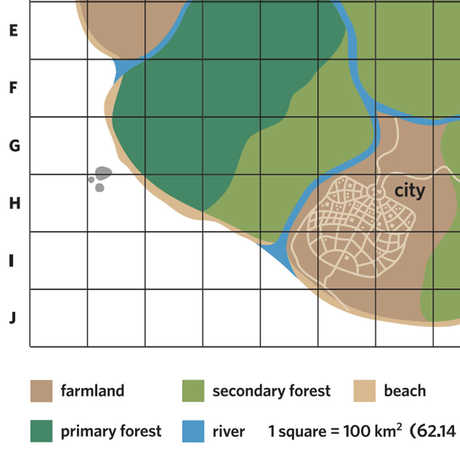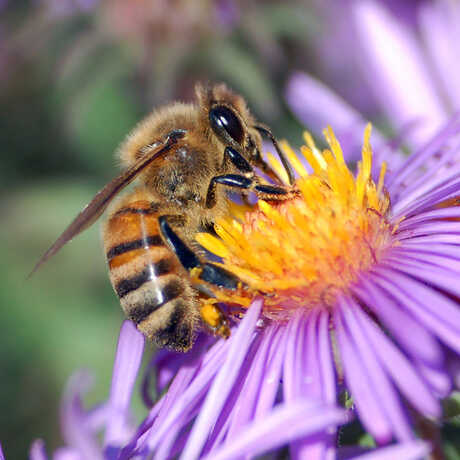
"Close-up of Coral Polyps" © 2009 Mark Yokohama
By building an edible coral polyp, students will learn the anatomy of coral and be able to explain why corals are animals, rather than plants.
Students will be able to:
- build a simple representation of a coral polyp, and
- explain why corals are animals, rather than plants.
- paper towels/rag for clean-up
- paper plates (1 per student)
- paper napkins (1 per student)
- toothpicks (1 per student)
- 1/3 plastic straw (1 per student)
- 1/3 banana (1 per student)
- Pull and Peel Twizzlers cut into 1-inch pieces, or pretzel sticks for younger students (6 per student)
- sugar sprinkles (1 per group of students)
- 1 jar of jam
- Ritz crackers (1 per student)
- Coral Polyp handout (1 per student)
- Analogy Map worksheet (1 per student)
- Teacher Guide: Build a coral polyp
- Blue Planet DVD: Coral Seas episode
- DVD player with LCD display
hard coral: marine animal that produces a hard, calcium carbonate skeleton and grows into coral reefs
coral polyp: a marine animal with a body shaped like a cylinder and tentacles around a central mouth
algae: a general term for microscopic or larger aquatic plant-like organisms. They differ from trees and bushes because they don’t have true roots, stems, and leaves.
zooxanthellae: tiny algae that sometimes live inside other organisms such as coral
tentacles: a flexible body part that is used for feeding, grasping, or moving
- Decide how you would like to split up the three parts of this lesson. Each part will take approximately a full class period (~30 to 45 minutes each).
- Make copies of the Coral Polyp handout and the Analogy Map worksheet (1 per student).
- Decide how you will group students for this lesson. Each student will be working individually to build a coral polyp, but they should also be seated in groups of four or five to share some materials.
- For Part 2, prepare 1 plate of materials per student. Each plate should include:
- 1 spoonful of jam
- 1 toothpick
- 3 Ritz crackers
- 1 section of Pull and Peel Twizzlers cut into 1 inch pieces, or 6 pretzel sticks for younger students
- 1/3 plastic straw
- 1/3 banana
- 1 napkin
- Introduce the activity’s essential question by writing this on the board: “Is coral a plant, animal, or something else?”
- Prompt students to think-pair-share about this question.
Teacher Tip: Students are often split in their ideas about this question. Some students might firmly believe a coral is a plant or an animal, and some students might be totally unsure. That’s OK! Be sure to have a brief discussion to elicit students’ reasoning and explanations about their ideas.
- Have a few students share their ideas. Be sure to keep the question on the board for the remainder of the lesson.
- Tell students that coral is definitely a living thing, and that the goal of this lesson is for students to discover what type of organism coral is.
- Give students some time (~1 minute) to brainstorm a short list of some of the key differences between plants and animals. They can talk in pairs or write their ideas individually.
- Ask students to share some of the big differences between plants and animals.
- Create a table on the board to keep track of the key differences between plants and animals. Fill in the table as students share their ideas.
- After reviewing the table, tell students that coral is definitely a living thing, and that they will get to discover what type of living thing coral is during the next part of the lesson.
- Explain that they are going to make a simple representation of coral polyp using everyday materials. By building this representation of a polyp, they will be able to figure out whether a coral polyp is a plant, an animal, or something else.
Teacher Tip: In this portion of the lesson, you will be drawing the coral polyp anatomy on the board while your students build their edible polyp. The TEACHER GUIDE shows what to draw on the board while students build their polyp. Before starting the hands-on building, be sure to set expectations so students do not consume any of their building materials. You can reassure students that they will get a chance to consume their coral polyps at the end of the lesson.
- Begin the lesson by reminding students of the ideas that they discussed in Part 1. Remind students of the focus question and the goal of the activity.
- Hand out a plate of materials to each student. Begin building the coral polyps following the seven steps in the “Build a Coral Polyp” TEACHER GUIDE.
- Once students have finished assembling their coral colonies, draw their attention back to the guiding question. Give students time (~5 min) to think-pair-share on the question, based on what they learned from building their polyp.
- Have students share their explanations about whether coral is a plant, animal, or something else? (Students should identify that coral is an animal). Encourage students to provide reasoning for their explanations. (It eats other organisms by capturing them with its tentacles. It does not have plant parts. It cannot make food from the sun’s energy without the help of zooxanthellae).
- Tell students they can pretend to be predatory fish, such as parrotfish, that eat coral polyps. Students can eat their polyps, but since fish don’t have hands, you should encourage your students to eat with their hands behind their backs.
NGSS SCIENCE AND ENGINEERING PRACTICES CONNECTION: This portion of the lesson connects to the Practice of Constructing Explanations because students are asked to explain why they think coral is a plant, animal, or something else. Students’ explanations should come from the observations they made while building the representation of a coral polyp, and from the plant vs. animal brainstorm in Part 1.
- Begin by engaging students in a reflective discussion regarding how the polyps they just built compare to real coral polyps that live on a coral reef. Have students share their ideas about what the representation accurately shows (the basic parts of a coral polyp’s anatomy) and what it doesn’t show accurately (cellular structures, how corals move to catch food).
- Tell students that they will be making observations of coral in the real world to help deepen their ideas.
- Play the Coral Seas episode on the Blue Planet DVD from 0:00-10:24. Teacher Tip: You can pause the video at 7:16, 7:18, and 8:43 to see some really great, close up views of polyps.
- While watching the DVD, have students record their observations and questions about real coral polyps with the sentence frames: -I notice… -I wonder…
- Pose the question, “How is the coral polyp we built like a real coral polyp? How is it different?” In small groups, have students discuss the ideas that are generated by this question.
- Tell students they will organize their reflections about their coral polyps using a tool called an Analogy Map.
- Explain the parts of the Analogy Map, and give one copy of the worksheet to each student.
- Have students complete the analogy map worksheet. -For younger students, you could complete the map as a class activity. -For older students, you could assign this as individual homework.
- Have students pick one feature of the polyp and brainstorm ways to improve it or make a more accurate representation of the coral polyp. Some ideas include: -how to show the polyps retracting into their skeletons. -how to show polyps moving their tentacles to catch food. -how to represent the zooxanthellae within the polyp tissue.
Discuss students’ lingering questions about corals and coral polyps.
Corals are animals that belong to the phylum Cnidaria, which contains sea anemones, jellyfish, hydra, and corals. The name “Cnidaria” comes from the Greek word “cnidos” which means stinging nettle. Cnidarians are radially symmetrical (symmetrical around a central axis) with an opening at one end that is surrounded by tentacles. The tentacles have specialized stinging structures called nematocysts that are used for protection and to capture prey. The tentacles bring food into the animal’s one opening, which is used both to take in food and to expel waste materials. The coral animal, made up of its tube-shaped body, its tentacles, and its mouth, is called a coral polyp.
There are two main types of corals: hard corals and soft corals. Hard corals are classified within the subclass Hexacorallia because their tentacles are arranged around the mouth in multiples of six (hexa = six). They are called hard corals because they extract calcium and carbon from the ocean water and deposit a hard calcium carbonate skeleton that surrounds the lower portion of the body. Coral polyps fuse their skeletons together and form large coral colonies. These fused polyps are the basis for coral reefs. Coral polyps extend their tentacles from their skeleton to feed and withdraw into the skeleton for protection. Thus, the appearance of a coral colony can look very different depending on whether the polyps are extended or not. When hard coral polyps die, the calcium carbonate skeleton remains intact. You can often find pieces of white coral, the remains of former coral colonies, washed up on tropical beaches.
Soft corals are classified within the subclass Octocorallia because their tentacles are arranged around the mouth in multiples of eight (octo = eight). Soft corals do not produce a hard external calcium carbonate skeleton and therefore do not contribute significantly to the building of reefs.
Hard corals and some soft corals contain zooxanthellae within their tissue. Zooxanthellae are microscopic marine algae, some of which are free living and some of which live inside the fleshy tissue of corals and other marine organisms. Zooxanthellae that live inside corals have a mutually beneficial symbiotic relationship with their host. This means that both the coral and the alga benefit from the relationship. The zooxanthellae photosynthesize from within their coral host and produce sugars that provide nutrition to both the zooxanthellae and the coral. In return, the coral provides protection and assists the growth of the zooxanthellae by passing on some of its waste, which the zooxanthellae use as a nutrient source. Because zooxanthellae need sunlight to perform photosynthesis, they are the reason why corals need sunshine to survive. The colorful zooxanthellae also contribute to the coral animal’s bright color.
Science and Engineering Practices
-
Constructing explanations
K-2: Make observations (firsthand or from media) to construct an evidence-based account for natural phenomena.
3-5: Use evidence (e.g., measurements, observations, patterns) to construct or support an explanation.
6-8: Construct an explanation using models or representations.
Disciplinary Core Ideas
1-LS1.A: Structure and Function
- All organisms have external parts. Different animals use their body parts in different ways to see, hear, grasp objects, protect themselves, move from place to place, and seek, find, and take in food, water and air. Plants also have different parts (roots, stems, leaves, flowers, fruits) that help them survive and grow.
4-LS1.A: Structure and Function
- Plants and animals have both internal and external structures that serve various functions in growth, survival, behavior, and reproduction.
Related Performance Expectations
Remember, performance expectations are not a set of instructional or assessment tasks. They are statements of what students should be able to do after instruction. This activity or unit is just one of many that could help prepare your students to perform the following hypothetical tasks that demonstrate their understanding:
4-LS1-1 Construct an argument that plants and animals have internal and external structures that function to support survival, growth, behavior, and reproduction.
Clarification Statement: Examples of structures could include thorns, stems, roots, colored petals, heart, stomach, lung, brain, and skin.] [Assessment Boundary: Assessment is limited to macroscopic structures within plant and animal systems.]
Adapted from Ayres, R. California Academy of Sciences. Coral Polyp Party. California Academy of Sciences' Educator Resource Materials. (2007).
Alastair Fothergill (Director). (2002). The Blue Planet: Coral Reefs [Documentary]. Britain: BBC Video.
Coral Symbiosis: Coral Polyp and Zooxanthellae. University of California Museum of Paleontology, Taxon Lift. Introduction to Cnidaria. Retrieved April 28, 2008 from http://www.ucmp.berkeley.edu/help/taxaform.html
Castro, P. and Huber, M.E. 2013. Marine Biology, 9th Edition. New York, NY: McGraw-Hill
Image: "Close-up of Coral Polyps" by Mark Yokohama, licensed and modified under CC BY-NC 2.0; originally sourced from https://www.flickr.com/photos/theactionitems/3606129306


